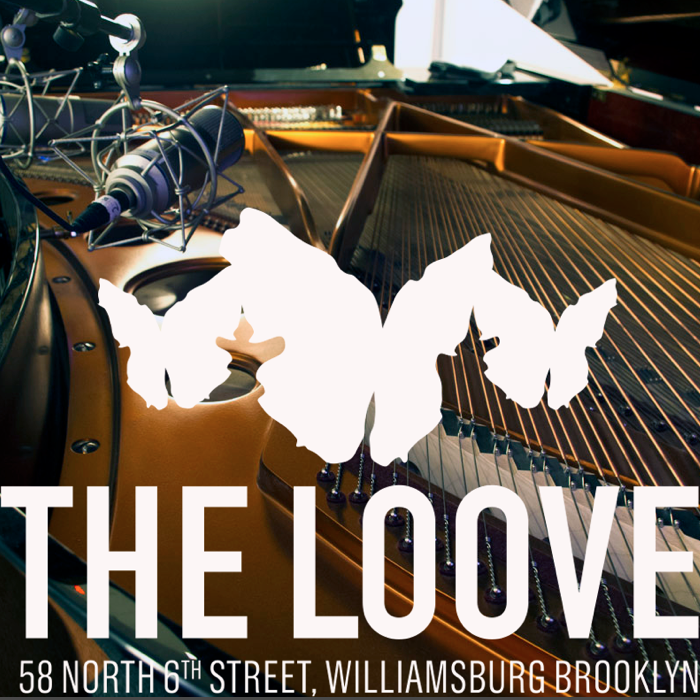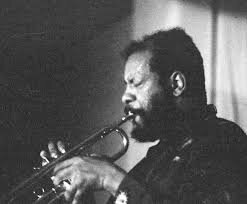Lessons from Ornette
as it is
What free jazz can teach us about an increasingly interconnected and complex world.
I believe that every human being should strive and try to get his ideas into the arena of survival.
-Ornette Coleman, STATDGARDEN
Coleman's unique approach to composition and performance, which came to be known as harmolodics, allowed for the unique expression and insights of individuals in collective collaboration. His method was revolutionary for the music he made and the people he worked with, and it is of note that Coleman's musical breakthroughs coincided with the simultaneous growth of the Civil Rights Movement, which also sought the equality of all voices in a complex system.
Coleman's harmolodics provides not just a blueprint for innovation in the arts, but a philosophy for self-empowerment in the service of social movement, by using improvisation to let ideas flow freely. Ideas, and their expressions, are something Coleman often spoke of with reverence.
Openness through sound
Stephen Rush, a jazz musicologist as well as a biographer of Coleman, has done much of the groundwork to catalog the current understanding of harmolodics, which Coleman passed on to his collaborators mostly via oral tradition.
"Harmolodics," writes Rush in his book Free Jazz, Harmolodics, and Ornette Coleman, "is about the relationship between style and process in improvisation. It is also about human rights and issues surrounding equality. Simply put, harmolodics respects every single voice in an ensemble, without creating a preference or elevated function for any one instrument...Harmolodics is also the science, one might say, of exploring the basic premise for improvisation: the empowerment of each human voice within the ensemble, or, more broadly, within society...It is a logical progression from 'playing over the changes' to another approach that suggests 'playing within the ethos of a composition.'"
Coleman explains in an interview with Rush that melody is the "source of music" and in harmolodics all performers are invited to be a part of it. Don Cherry, who frequently collaborated Coleman, notes in a 1983 Downbeat interview:
When we would play a composition, we could improvise forms, or modulate or make cadences or interludes, but all listening to each other to see which way it was going so we could blow that way. Ornette’s harmony would end up being a melody and the original melody would end up being a harmony.
Instead of a piece functioning as a static composition that is executed by an ensemble, it is something that happens in the moment, written and re-written by every performance and each individual comprising the group. Coleman, in a 2008 Downbeat interview, defines composition as an "idea that makes other ideas besides itself." Coleman essentially facilitates a prompt, an idea-space for his collaborators to generate their own ideas.
In a harmolodic composition-performance (for Coleman, the two are closely related) the locus of control is placed within the performers. Personality psychology suggests this leads to a sense of individual empowerment, or self-efficacy. Harmolodics emphasizes ideas, of any kind, to be evolving, living things, for which we are conduits. "What is so eternal about human is the idea..." Coleman elaborates.
Coleman's philosophy asks that we forget our personal, or ego-driven intentions, allowing ideas to express themselves. In the Sound Museum (1996) liner notes Coleman writes, “All [sounds] are expressed as equal information for the players to improvise without any reference to a style which lies in the judgment of memory." Coleman's desire to transcend his own established patterns is what drove him to move away from the saxophone and experiment with other instruments, like violin and trumpet. He remarks "[w]hen I take my instrument, I know it too well...[b]ecause of that, I'm not sure I want to do it that way." He needed to break his own expectations, because he was "only trying to make contact with life," as opposed to trying to play the saxophone some specific way. This is more than a method of composition — it's a mode of thinking that can be applied across fields.
cognitive dissonance
What’s so free about it, you don’t have to hunt for it, it will appear. It’s not coming there because of you, it’s coming there because it exists. Life itself is dealing with those problems every minute. The quality of knowledge is not class, race or sex. It’s creation. If you have an idea and you put it down and materialize it, that’s as good as you can do.
"Suppose you couldn’t read or write, but you could pick up a horn and play everything anyone has ever heard?", Coleman says to Downbeat. He acknowledges "[t]hat can exist. That does exist ... [you don't have to play according to] rules and conventions. The saddest thing in the whole world is when a human being makes another human being feel less than they are." When Coleman was starting out, he mostly learned his parts by ear and picked up theory and transcription from the musicians around him, according to archival materials from the Music Inn artist's retreat. These materials include insightful interviews collected by Bad Plus pianist Ethan Iverson with Gunther Schuller, a composer working at Music Inn who helped bring Ornette's music to mainstream (read: white) attention. Gunther Schuller, according to his interview with Iverson, attempted to teach Coleman to read and write standard notation:
Coleman at that time was a very poor reader. I don’t know exactly how he was able to assimilate all the arrangements and compositions that we produced in that year in all of our concerts at the Lenox School of Jazz. It can only be that his ear was so fast that he could —because he couldn’t really read it and he sometimes had to have somebody play it or have him play it on the piano. And then once he heard the notes he just kind of instantly memorized it.
Gunther Schuller is also quoted by John Litweiler in his biography A Harmolodic Life, where he relates a story of a strange breakthrough while teaching. Coleman apparently had to leave one lesson to "vomit for about ten minutes" and when he returned, said, "I don’t know what happened, but I realized something I never realized before and it really hurt me.”
Coleman never went back for another lesson, and Schuller confirms that he continued to write in his own style, usually relying on those with more formal training, such as Don Cherry, to transmute his ideas into standard notation. He also speculates that this is likely an aspect of what allowed Coleman to be such a revolutionary improviser and composer. Schuller supposes that it was because Coleman suddenly understood that "everything he had learned up to then was 'wrong,'" at least according to Western tradition. Perhaps Coleman even glimpsed how oppressive the tradition had become.
What's truly remarkable here is that Coleman found a system that worked for him, despite operating outside of tradition, that could also be expressed to and involve others. Coleman, being idiosyncratic himself, built a philosophy that allows for anomalies to be integrated into the whole rather than excluded as outliers. Coleman's process accounts for and accepts so-called black swans, the unpredictable events that have a disproportionate influence over history because of their disruptive force. In the age of Big Data, it's tempting to believe that we can predict our way out of all of our problems. However, a harmolodic understanding allows us to grapple with the fact that great change necessarily comes from that which we cannot anticipate.
Better living through harmolodics
While structure often affords stability, it can also box us in, preventing our personal growth and expression of ideas that challenge prevailing social norms. Watching the news is almost like watching society collectively experience Coleman's ten minutes of vomiting. Maybe he was reacting to how wrong we all were, and hopefully now we're starting to catch up.
We're currently confronted by complex, massive, systemic issues in our society — not something a single person can address, nor would we want a single perspective on them. But that's the beauty of Coleman's philosophy — it places the individual at the heart of a holistic perspective. In a time when we feel so atomized and powerless in the face of daunting problems, Coleman's mode of thinking can move us to act. "Doing is believing," he tells Downbeat. "That’s one way you know you exist... Just you, your heart, your brain and the love that you wish to express because of what it means to you. Doing is believing. It’s the whole thing. Doing doesn’t get destructive, doesn’t have to be above or below, it’s right there."
Over the past century, individualism and collectivism have been set up as opposing forces, embodied in the Cold War politics of capitalism versus communism that still reverberate today (see our current relations with China, Russia). But Coleman presents a holistic conceptualization of individualism — the whole is only complete if everyone is radically their self.
Humans have always been raising the ante of how life could be expressed in so many different forms. It’s never going to die, it will only get better ... Imagine how many human beings there are. And every one of them has the ability to be the way they wish they can be, seeking out the knowledge they want to bring to the surface, to be able to be judged because of that.
Coleman, who was no stranger to injustice, retained an inspiring optimism that we might embrace in our often cynical times. This way of thinking resists rigid ideologies built on fear and generalizations that can never hold true. It resists sameness and the data-driven focus on laws of averages that can't keep up with a universe that's constantly in flux.
To be part of a freely expressed dialogue is to be a part of the moment. By building our own openness to experience and putting more value on constant change, we can start to develop a framework for a flexible society, capable of rapidly adapting to fit the needs of all people.
What does all that look like? Who knows. Here's a parting word form Ornette:
You can kill people, but you can’t kill life. That’s pretty good, isn’t it? That’s about as good as you can get it. The thing about life is that it comes in different forms. That has made the Earth the most advanced planet in the sky. Imagine that whatever decided there should be human, all they’ve done is expanded the eternity of what life can become. If you are trying to learn how to relate to how you got into existence, then you have to start with life. It doesn’t end there, it starts there.

